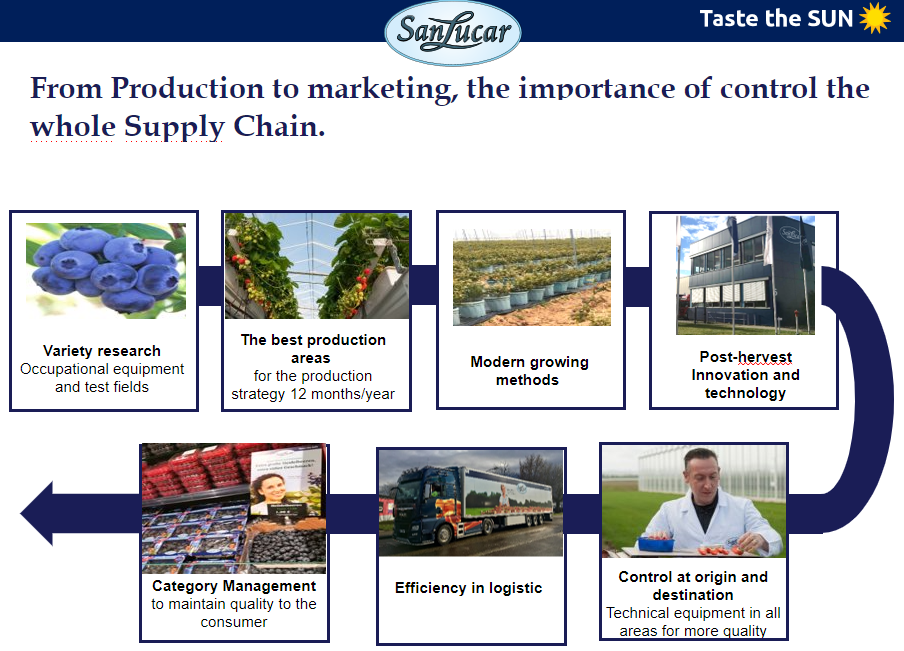The Global Players conference of International Blueberry Days was an opportunity to analyze and measure the competitiveness of blueberries in different global production areas, with a special focus on Peruvian production, which has radically changed the geography and seasonality of world trade in the past 5 years.
In this respect, Europe is also questioning itself: in particular, the two major producing countries (Poland and Spain) are reconsidering the entire blueberry supply chain to assess its future sustainability and redesign strategies to remain effectively in the market.
Jaime Sanchez, Commercial Director International Markets at SanLucar, presented in this regard a SWOT analysis, a strategic planning tool used to analyze the strengths, weaknesses, opportunities and threats of an organization or market. This type of analysis helps assess an organization's or market's competitive position and identify any critical points.
In the case of the SWOT analysis of European blueberries presented by Sanchez, strengths include growth in demand due to expanded production, availability of blueberries for 52 weeks of the year, and packaging innovation, which has led to new ways of consuming blueberries.
Market weaknesses include the irregularity of production throughout the year, the lack of uniformity in the quality of blueberries throughout the year, and the high cost of production, which is labor-intensive.
The results presented by the SWOT analysis of blueberries Europeans indicate that there are many opportunities for the market. For example, there is an opportunity to collaborate with technology companies to improve fruit quality and extend fruit shelf life using natural and residue-free components.
In addition, the implementation of optical sorting machines and harvesting robots could improve efficiency and reduce costs.
However, there are also threats that could significantly impact the market, such as labor shortages in Europe and rising wages, economic instability in the eurozone, rising production costs, and the impact of climate change and other external events such as war.
| STRENGTHS Growth in consumption driven in part by production expansion. Availability of 52 weeks per year of blueberries on market shelves New, innovative and larger packages leading to increased consumption and new ways of consuming blueberries. (snacking, on the go...). Segmentation New premium selection program that meets market needs in terms of texture, size, shelf life and taste. |
| POINTS OF DEBABILITY Production still uneven throughout the year, with some gaps in production in some months. Quality continues to be uneven throughout the year, depending on the time of year. Irregularity of varieties leads to bad consumer experiences. Large increase in production costs of blueberries and large demand for labor for harvesting. |
| OPPORTUNITIES Alliance with technology companies in other sectors in order to: Improve fruit quality by implementing optical grading and sorting machinery. The use of natural and zero-residue components to prolong the self-life of fruit. The use and implementation of harvesting robots to avoid labor problems. Data architecture and the study of data to create algorithms to help make decisions, predict yields. |
| MINACIES Lack of labor in Europe and rising wages. Low economic growth in the eurozone. General increase in all other costs, logistics, agricultural items, packaging... Retail prices, great tendency to sell on promotion and retailers driven by falling prices. Climate change. Water and land constraints. War |
SanLucar's recipe for managing this complexity lies in controlling the entire supply chain:
- varietal research
- selection of the best production areas
- modern production systems
- innovation and technologies in post-harvest
- Technical controls at all stages of supply
- efficient logistics
- category management to ensure quality for the consumer

All rights reserved - Italian Berry - CC BY License








